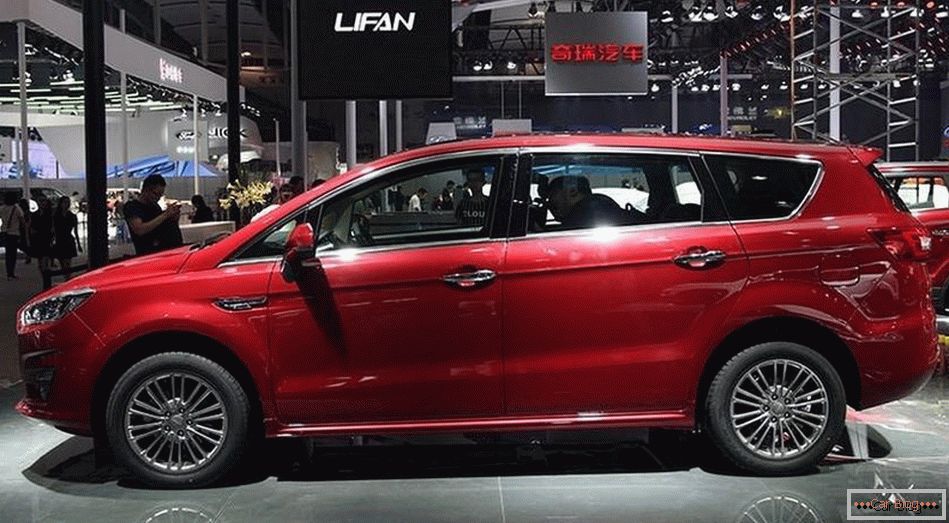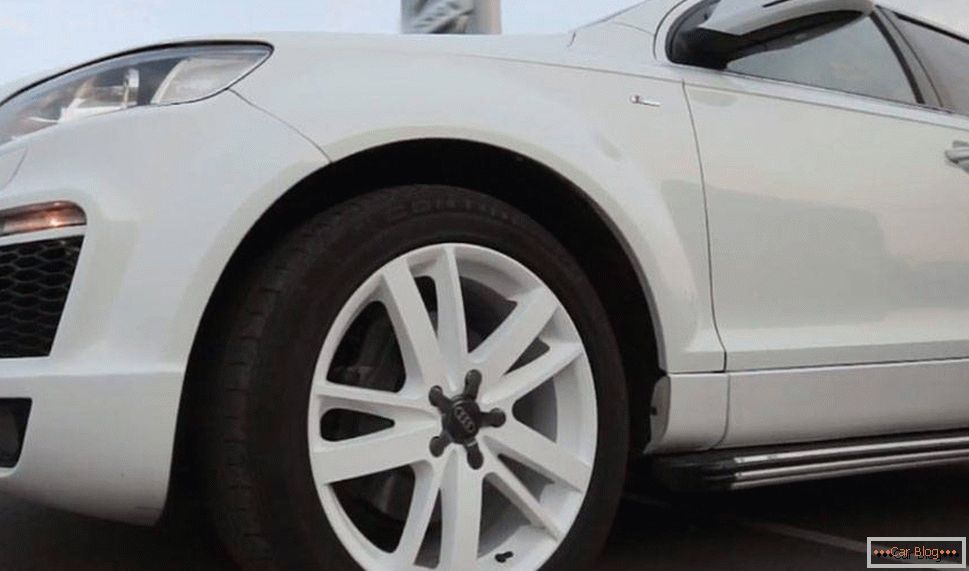>
The main part of the territory of Russia is characterized by a rather severe course of winter. A lot of precipitation falls, fetters frost, ice is formed, low temperature lasts until the middle of spring, and even longer. In some regions, winter does not stop almost the entire year.
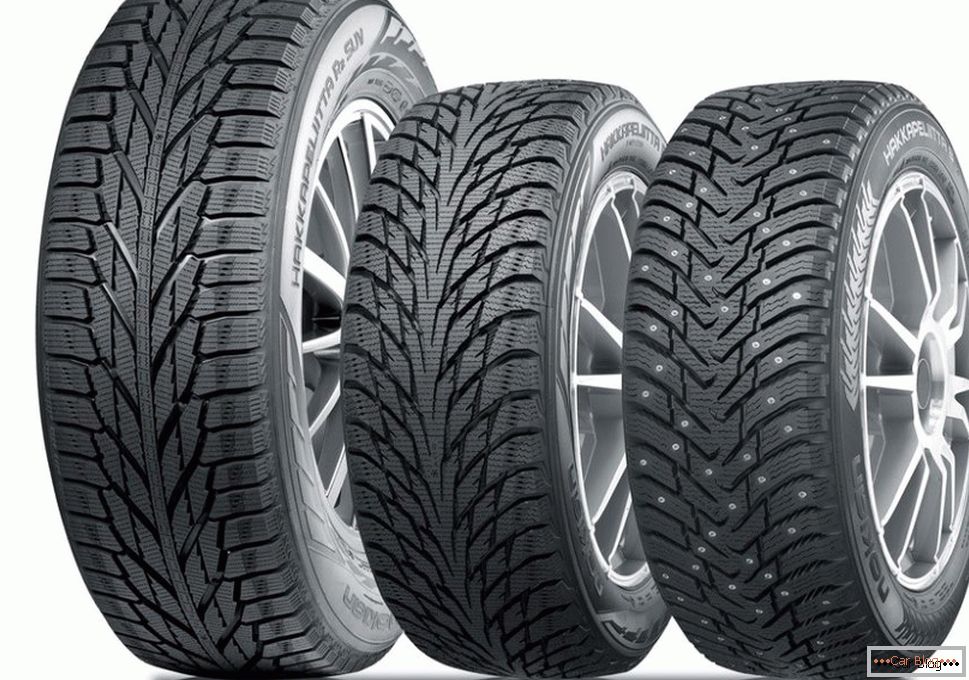
What tires to buy for the winter period: spikes or velcro
Отсюда возникает необходимость в наличии хотя бы одного комплекта зимней резины хорошего качества. Есть много отличных производителей, зарекомендовавших себя с лучшей стороны.Читать далее о том что лучше: липучки или шипованные шины-->
But the main controversy is over which rubber is better if you choose between studded and non-studded, that is, friction.
Initially studded tires were unrivaled when it came to winter. It copes well with snow, icy roads. But it was before. Modern technologies, new developments in the field of tread design and a number of other innovations suggest that spikes will not always be the first choice.
Consider them separately, discuss the strengths and weaknesses, and then summarize.
Studded
Compared with summer sets, studded winter tires have a milder chemical composition. At the same time it is coarser when compared with Velcro.
Previously, one could rightly blame studded tires for the fact that these spikes fly out, quickly erased when used on asphalt. But modern technologies allow to preserve the integrity of the material from which the spikes are made, as well as to protect the spikes from falling out of the rubber itself.
Without spikes, it is more difficult for a car to cling to a snowy and icy surface. Especially they save when the road is covered with a thin layer of water due to the heating of the ice. Ordinary tires will begin to slide and rotate, while the spikes will confidently pull the car even uphill.
Indeed, high-quality studded tires have important constructive advantages, therefore it is not surprising that it is so widespread in countries with a harsh winter climate. In addition to Russia, it is the Scandinavian countries, Canada and not only.
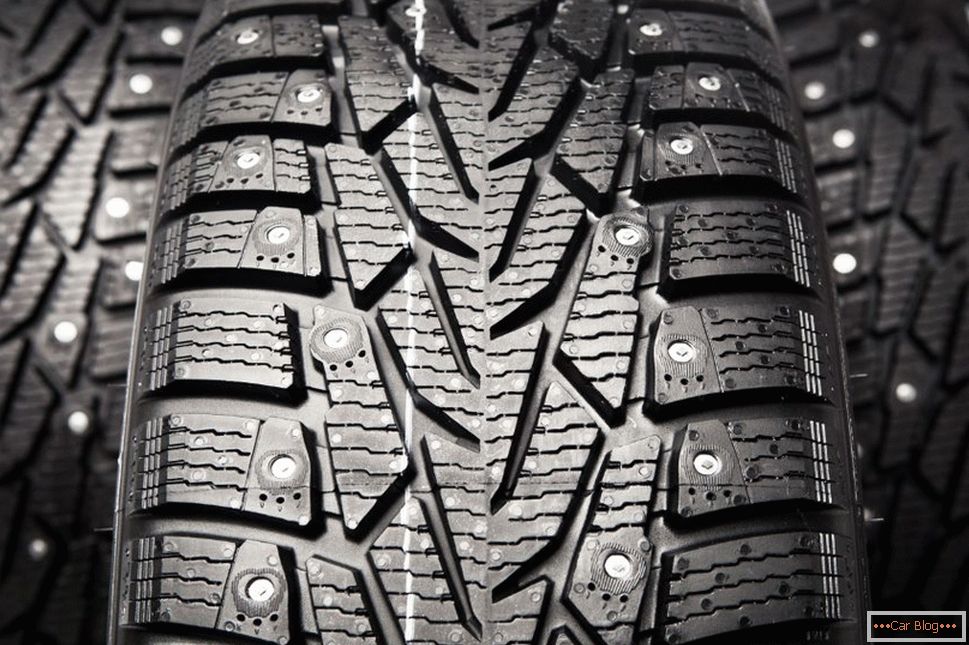
Studded tires
Advantages and disadvantages
In order to give an objective assessment and to understand what is better between the velcro and studded tires, you need to consider the strengths and weaknesses of the two options.
Let's start with studded wheels. Their benefits include:
- excellent traction with snow;
- excellent ice performance;
- good handling;
- shortened braking distance, when compared with rubber without spikes;
- permeability in deep snow;
- confident cornering, braking and acceleration.
But thorns have flaws. They appear in the following aspects.
- Noise. Spikes, made mostly of metal, create additional noise. Basically sound discomfort occurs when driving on asphalt. It is hardly noticeable in the snow.
- Grip on wet asphalt. The spikes protrude relative to the rubber itself, thereby reducing the area of contact with the surface.
- If the temperature falls below -20 degrees Celsius, the ice becomes very strong. Because of this, the spike can not pierce the ice, and begins to scratch and slide on it. The effectiveness of the performance characteristics of studded rubber drops significantly.
- Increased fuel consumption. In winter, fuel consumption increases, but the spikes increase it even more.
- Vibration, which gives the steering wheel. It arises because of the high tread and the spikes themselves.
- Departure and point of thorns. Metal inserts do not rarely fly out or grind on the asphalt. This is true for old and cheap kits. If you buy enough quality tires, this drawback will be minimized.
- Life time. They usually work no more than 3 - 5 seasons, depending on their duration and the initial quality of tires. In general, rubber becomes unusable due to grinding or spikes.
Yes, there are certain problems with comfort indicators when driving on studded tires. But such tires are not created for comfort. Their task is to provide confident driving, safety, maneuverability and precise handling in difficult weather conditions. In parallel with this, you will have to endure vibrations, noise and other disadvantages.
Липучка
Friction rubber has no inserts of metal or other materials. Velcro is designed to operate vehicles in the conditions of wet asphalt and icy pavement.
That rubber coped with the functions, tires it is important to make at the same time soft and rigid. Softness provides adhesion to the surface. Hence the name Velcro. A stiffness is necessary to maintain a high level of control. In other words, to the car to listen to the helm and do what you say to him with the help of the steering wheel.
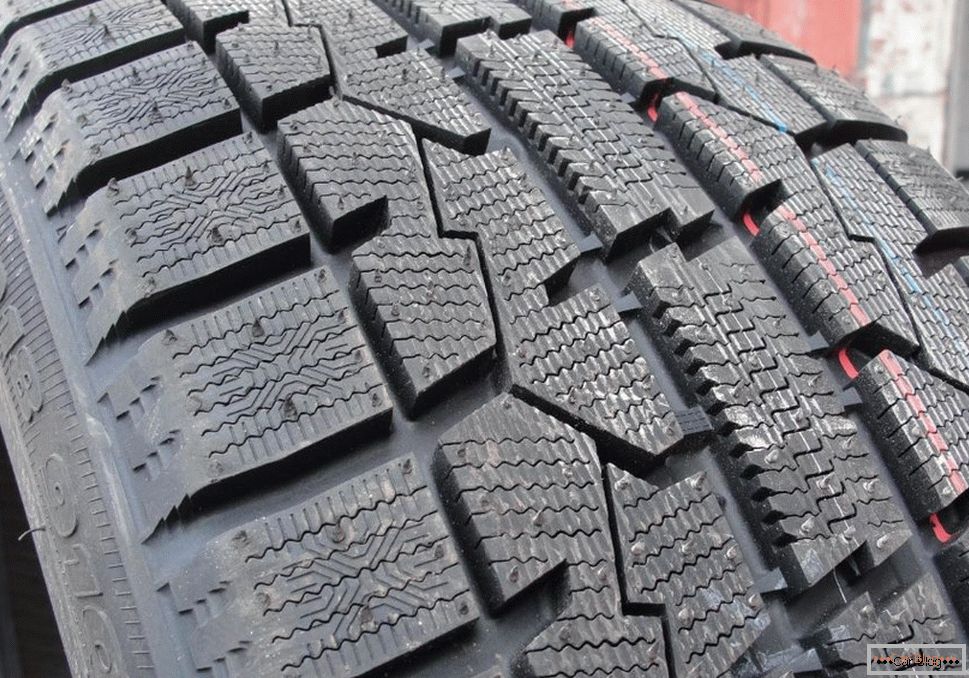
Friction slice or lipstick
For winter velcro dry asphalt is contraindicated, because in such conditions, the rubber overheats, starts to swim, the tread pattern is broken, and then the wheels simply do not cope with their functions. If you drive on dry pavement for a long time, the car will start to pick up speed more slowly, with problems going into a turn and slowing down for a long time.
The uniqueness of velcro lies in its chemical composition. When it is cold outside, the rubber becomes soft, due to which efficient control is ensured. When it gets warmer, the surface layer becomes tougher, allowing you to maintain good handling on dry pavement.
Velcro has special sliced elements (lamellae) and the like of sharpening on one side. With their help, the rubber clings or sticks to poor coverage (ice, snow). Due to the unique pattern, excess water is effectively discharged so that the tire is in good contact with the road.
Advantages and disadvantages
If we talk about Velcro, here too there is a list of strengths and weaknesses.
The benefits include:
- the absence of unnecessary noise, since there is nothing to create (there are no spikes);
- lower fuel consumption compared with studded counterparts;
- lack of vibrations;
- stability in the conditions of wet asphalt;
- long service life (3 - 7 years, depending on the quality of rubber).
As for the shortcomings, they are also important and can be key in the final choice in favor of studded rubber or velcro.
- The worst indicators of controllability on road surfaces with ice or snow, when compared with studded tires. Since it is important for many in the winter to feel confident on ice and snow, many will call this drawback the key and will be right.
- Braking distances. It is more, therefore it is necessary to brake on velcro in advance. It is important to understand in advance what path you will have in order not to begin to press the brake pedal just as you used to when driving on summer tires or even on spikes.
- Permeability in snow conditions. Also noticeably inferior to studded competitors. In this component, Velcro loses again, although we are talking about one of the main requirements for winter tires.
Once spiking wins almost all items in terms of operation in the winter, who and why will need Velcro, you ask.
In fact, all tires have their own markets. It all depends on what winter conditions are used specifically in your country, region or even city. Velcro is quite enough where the conditional winter, rarely snow falls, low temperatures can be observed for several days during the whole winter, and the asphalt mostly remains dry or slightly snowed.
Put studded tires under such conditions, and they will be erased in a matter of days, all spikes will come out, and you will cause serious damage to the asphalt of your own city. There is no need for spikes here.
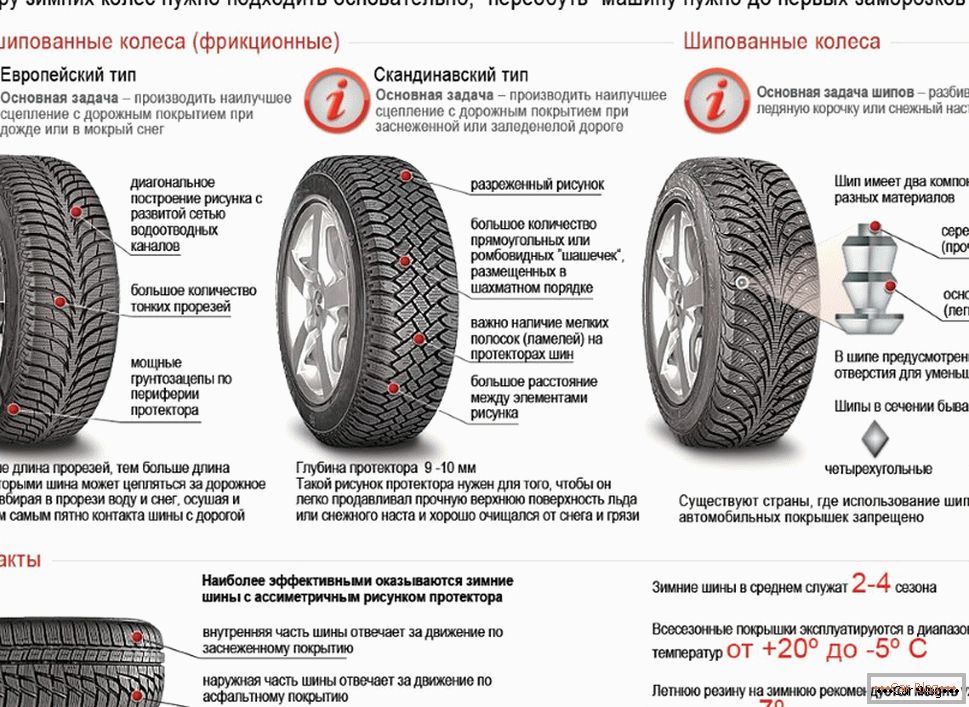
Summary of types of winter tires
Draw conclusions
Everyone decides for himself which tires are better to use in winter - studded or velcro.
For any rubber, velcro and studded tires, there is a place in the market. It is impossible to objectively say that one is better and the second is worse. It all depends on the specific operating conditions.
If you live in the south, your winter is light, fast-flowing and does not create serious traffic collapses due to snow drifts, then Velcro will be enough. Even large cities, such as St. Petersburg or Moscow, do not require powerful thorns. This is because the road services are actively working here, they quickly remove the snow, sprinkle roads with special reagents.
The situation is quite different in the northern regions, in cities and towns, where snow and ice are a real problem. Without spikes it will be difficult to get out of a skid, to go downhill on a snowy road, or just go outside the village.
Not the last role is played by the quality of the tires themselves. Cheap studded kits will not provide the characteristics and conditions mentioned above. Also, Velcro for a few hundred rubles is unlikely to cope with the burden imposed on them. Therefore, choose high-quality rubber from reliable manufacturers.  Discounts for new cars! Profitable loan from 9.9% installments 0%
Discounts for new cars! Profitable loan from 9.9% installments 0%  adom.ru. Moreover, practice shows that it does not have to be expensive models. Rely on the recommendations of the manufacturer, looking at the manual for your car.
adom.ru. Moreover, practice shows that it does not have to be expensive models. Rely on the recommendations of the manufacturer, looking at the manual for your car.
Write in the comments your arguments for and against studded rubber and velcro. It is very interesting to know your opinion and personal experience with these two types of winter tires.
Subscribe and tell about us to your friends and acquaintances!


